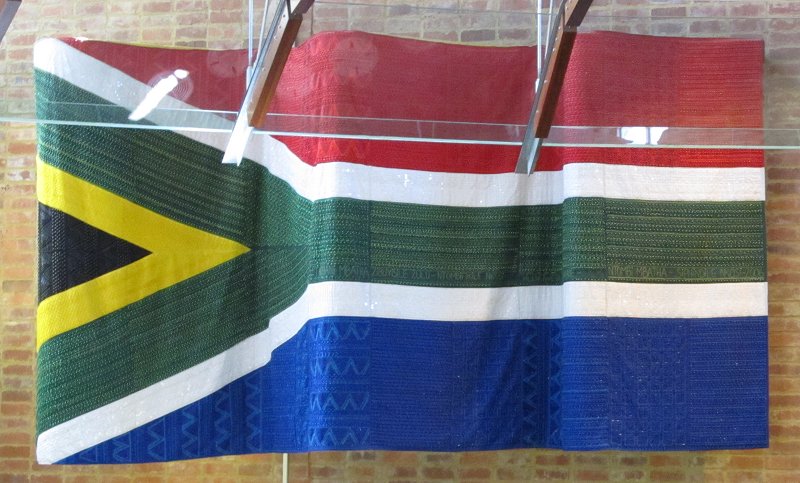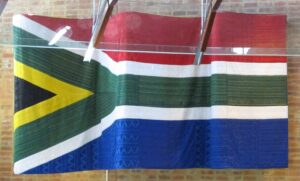

Johannesburg is a city in the making, with all the crime, good intentions and missed opportunities that that entails. But being just 130 years old this year and still in the throws of independence, it gives us a window into how important symbols are to a country, and how those symbols are chosen and how those symbols spring from art.
No one who studies art history is in any doubt as to the vital role art plays in a country’s view of itself. That view is held by the people through education and conditioning, and art reinforces the choices of the powerful throughout millennia but in Johannesburg we haven’t had the millennia that many cities in Europe enjoy. What we have is sight of the very generation creating those sym- bols that will, and are, defining a country. You see street artists breaking down the bricks that housed prisoners of conscience being reused in the interior fabric of the highest court in the land, and Post Modernist sculpture and graffiti being used to draw lines between crime ridden areas and new areas of middle class affluence. As everywhere else in the world’s busy cities, you find an innovative use of materials—whether it be reusing tyres for sculpture or shining up zips and nuts to create brass and copper jewelry.
And the purposing of art to revitalise a city is deliberately employed in gathering people of all ages together in regular markets and trails through the city. It is not for me to judge the efficacy of these efforts, what interests me is that before my eyes I see the symbols being made that will define South Africa as every bit as truly as Nelson’s Column defines a part of Britain or Chenonceau Castle defines a part of France. Art is a way of thinking and in the hands of the people it becomes a way of thinking about belonging, shared symbolic experience becomes identity and a country, which is never more than an agreement amongst a people to be ‘a people’, becomes a modern country.
The images of suffering, of victory, of new birth—that most redolent political clichés—are all here painted on walls, sculptured in wood or wire. Through the poverty and criminality, paint is flowing all over the city, people are speak- ing their own poetry on the streets to anyone who will listen, and if you do listen, it will come with the message that we are all one under the skin. Having a national gallery with great Western masters is almost superfluous in a city that is one large gallery. The growing Soweto middle class is dictating the speed of the progress but for the outsider the art is the key to understand- ing what is happening—this is a people finding themselves.
And it is a lesson. For we are too. No mat- ter what the symbols are, we all share with our grandparents—and there are many—each gen- eration has to add, subtract and gain its own understanding of what their country means by its symbols. In Johannesburg the visions are more acute and far more approachable. We sometimes lose sight of vitality in being educated into accep- tance without much thought. We often only see what we want to see or have been told to see. But the bare, naked heart of South Africa leaps off the figurative canvas of the city. It is brash, it is derivative, it is colourful and yet it is put together as nowhere else. Because the artists know what they are doing. They know the history they are making but they don’t know if their names will become part of that history. That is for the people to decide in coming generations.
If you want to see past the unique history of South Africa and understand why we use art as we do, and find out why art defines the human psyche and is defined by the human psyche, you will see it clearly in Johannesburg.
Daniel Nanavati UK Editor
Volume 31 number 2, November / December 2016 p 23

